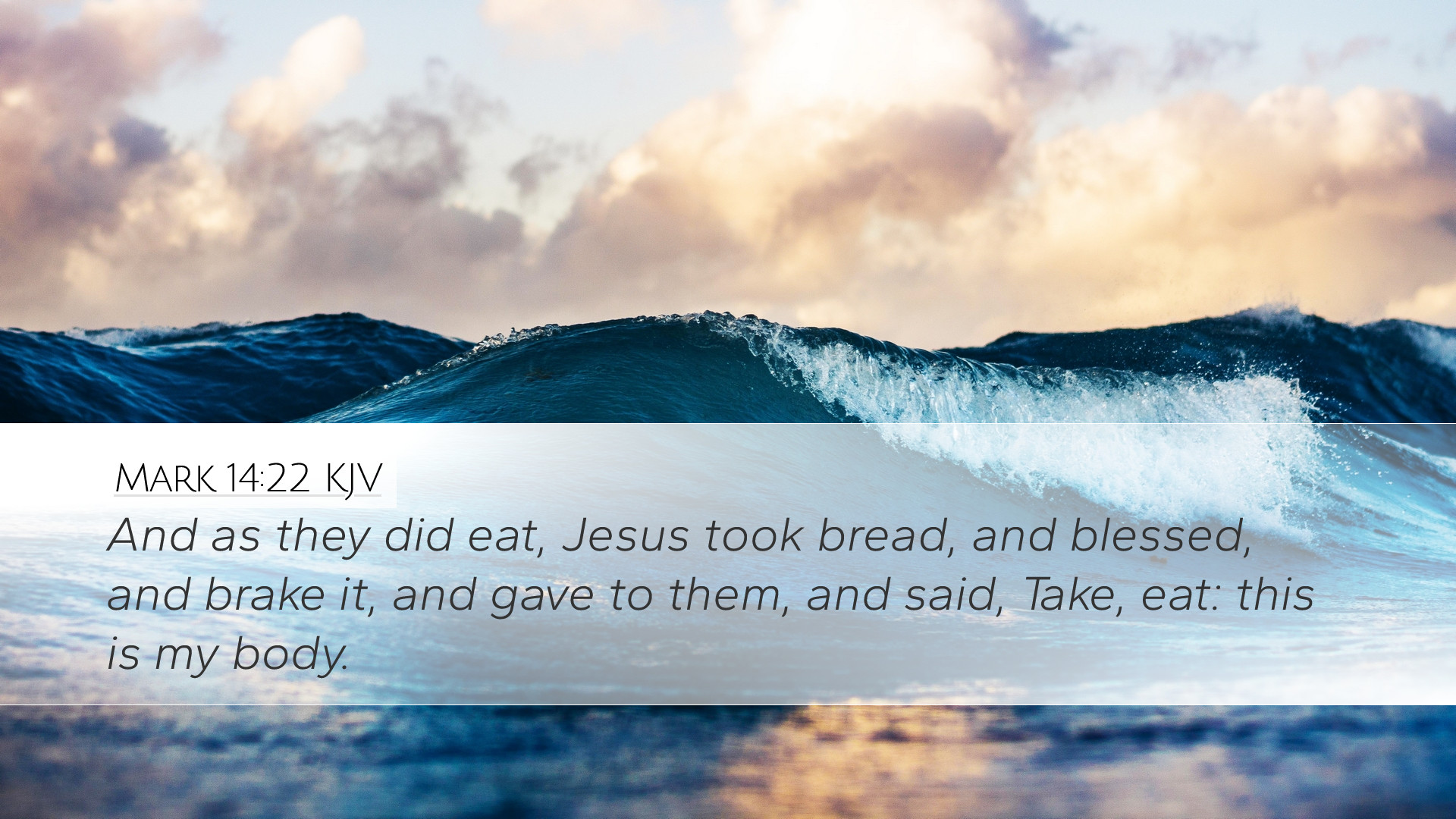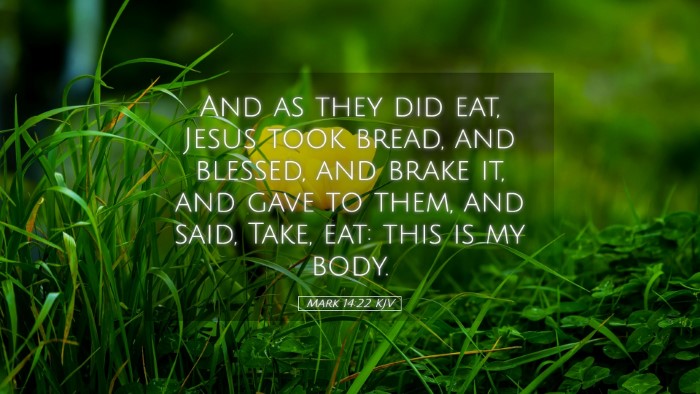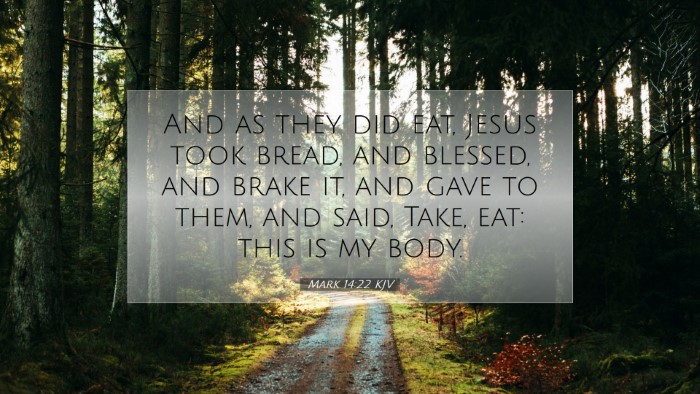Commentary on Mark 14:22
Verse Text: "And as they were eating, Jesus took bread, and blessed, and brake it, and gave to them, and said, Take, eat: this is my body."
Introduction
This pivotal moment in the Gospel of Mark occurs during the Last Supper, wherein Jesus institutes what is now known as the Lord's Supper or Communion. This sacred act is rich in theological significance and has been the subject of extensive commentary throughout church history.
Theological Significance
1. Institution of the Eucharist: This verse marks the establishment of the Eucharist, a central act of Christian worship. Commentators emphasize that in this act, Jesus articulates the profound mystery of His death and sacrificial offering for humanity.
2. Symbolism of Bread: As Matthew Henry illustrates, the bread represents Christ's physical body, which would be broken for the sins of many. This conveys the idea of sacrificial love and the profound communion believers experience through faith in Christ.
Commentatorial Insights
Matthew Henry:
Henry underlines the importance of understanding the act of breaking bread. This physical action symbolizes the breaking of Christ's body and showcases the necessity of His suffering for the redemption of humankind. Henry notes that this was not simply a meal but a covenant renewal, where Jesus provides a new understanding of God's promises through Him.
Albert Barnes:
Barnes highlights several key aspects regarding the Lord's Supper. Firstly, the act of 'taking' bread is indicative of acceptance and reliance on Christ as the sustainer of spiritual life. Barnes points out that the blessing of the bread indicates Jesus’ acknowledgment of God's provision. He stresses that Christ’s declaration, "this is my body," serves to affirm the reality of His sacrifice and the covenant established between God and His people.
Adam Clarke:
Clarke delves into the cultural context of the meal. He elucidates that during Jewish meals, the breaking of bread was a traditional sign of welcoming and fellowship. Clarke argues this modifies the understanding of community within the Church, emphasizing how believers are united not just in food, but in the understanding of Jesus' sacrifice.
Implications for Believers
- Communion and Fellowship: The breaking of bread signifies the communion of the saints. As the body is broken, so too are individual believers united in Christ.
- Personal Reflection: The act of participating in Communion invites self-examination among believers as one reflects on their relationship with Christ.
- Remembrance: This practice is a symbol of remembrance, calling believers to recall the significance of Christ's journey to the cross and its implications for their faith and life.
Challenges and Diverse Understandings
Various denominations have developed distinct interpretations of this verse. The theological divergence often hinges on the understanding of 'real presence' versus 'symbolic presence' during Communion. Commentators argue for a return to a biblically-centered approach to address these differences and to promote unity in core beliefs about Christ’s sacrifice.
Conclusion
Mark 14:22 encapsulates a profound moment of revelation and sacrificial love. The insights from prominent public domain commentators illuminate the spiritual depth of the Lord’s Supper as a means of grace, remembrance, and unity among believers. For pastors, students, and scholars, this verse stands as an invitation to deeper understanding and contemplation of the mystery of faith, calling for a reverent approach to the practice of Communion.


